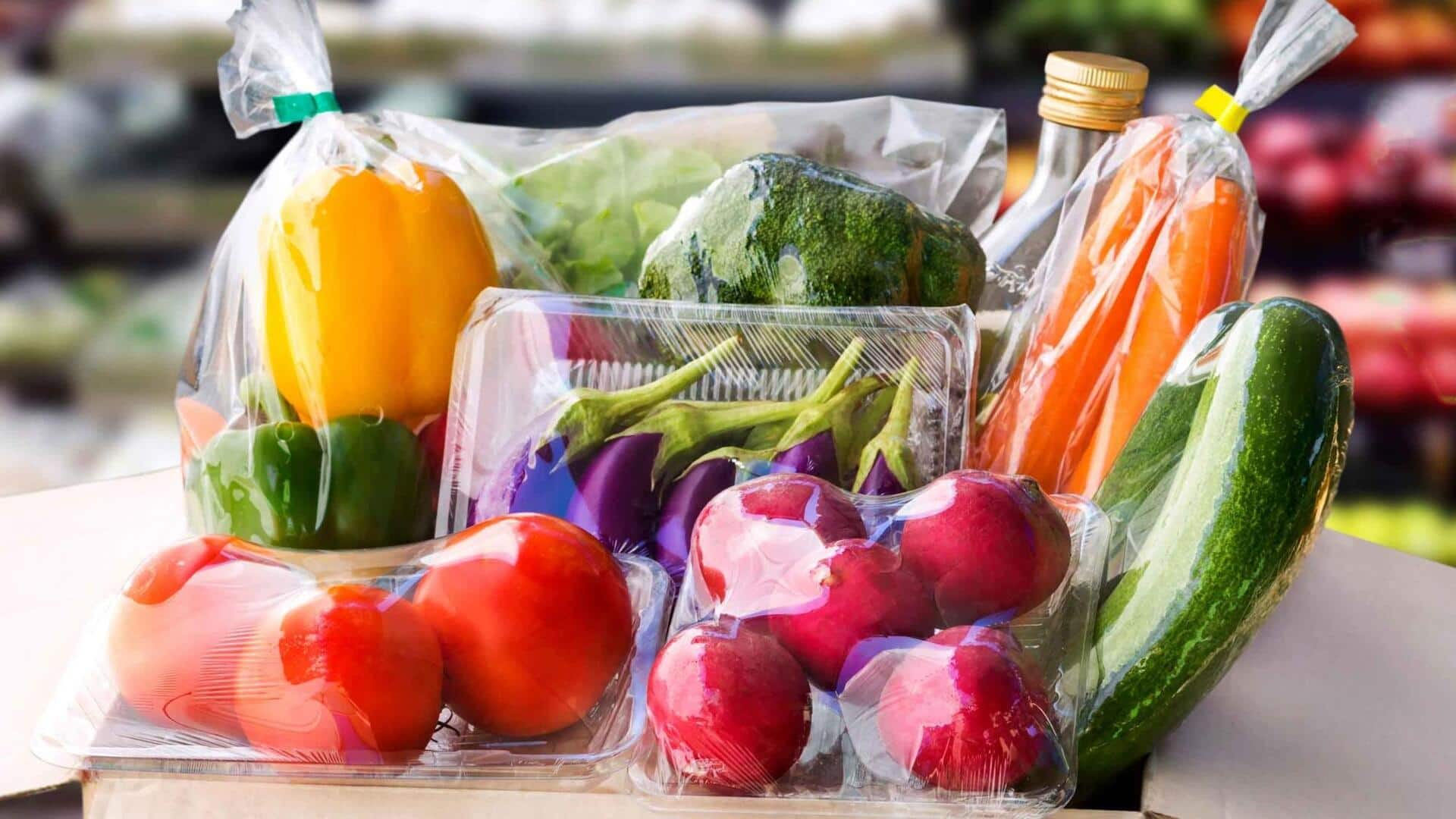
Plastic packaging is sneaking microplastics into your food
What's the story
A comprehensive review of 103 scientific studies has revealed that food packaging could be a major source of microplastic contamination in our meals. The research, led by biologist Lisa Zimmermann from the Food Packaging Forum in Switzerland, found that even normal use of plastic-wrapped food can lead to contamination with tiny particles called micro and nanoplastics (MNPs). These particles are released by various polymers during their use or degradation in the environment.
Contamination sources
Common food packaging materials are a direct source
The study found that common food packaging materials, including plastic drink bottles, chopping boards, glass bottles with plastic gaskets, and pizza boxes lined with plastic, are sources of microplastic contamination. Also included are disposable coffee cups, plastic tea bags, plastic wrappings, and microwaveable plastic containers. "We found food packaging is actually a direct source of the micro and nanoplastics measured in food," Zimmermann told CNN.
Health concerns
Microplastics have been found in human organs
Microplastics have been detected throughout the human body, even in placentas. They were also found in all major organs of mice, including their fetuses. While the health impacts of these particles remain largely unknown, the outlook isn't promising. A previous study had shown that cardiac and stroke patients with a high concentration of microplastics in their carotid artery plaque had a significantly elevated risk of death.
Research findings
Studies examined for plastic particles in food
The researchers examined 103 studies on plastic particles in food and food simulants. They extracted 600 entries on food contact items from the studies and found that 96% of these reported the presence of MNPs. Notably, some reusable plastic items like melamine bowls shed more microplastics with each wash. This indicates that repeated heating and abrasion could increase the rate at which these items degrade, leading to more microplastic contamination in our food.
Processing impact
Ultra-processed food contains more microplastics
The study also found that ultra-processed food contains more microplastics than minimally processed food. This is because more processing steps mean greater exposure to plastic food-processing equipment, resulting in more MNPs in the final product. The researchers suggest that not only is further research needed, but also action should be taken to reduce the use of plastics in food packaging and preparation.